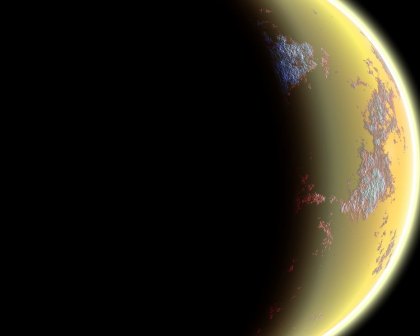Small probe could orbit Proxima b

Researchers want a closer look at Proxima b.
Image: Stock art.
The planet orbits Proxima Centauri, part of the Alpha Centauri star system and only four light-years from our sun. Researchers believe Proxima b may be habitable. Billionaire entrepreneur Yuri Milner last year announced plans to invest $100 million to develop “an ultra-light light sail that can be accelerated to 20 percent of the speed of light to reach the Alpha Centauri star system within 20 years,” according to the Max Planck Institute for Solar System Research in Germany.
The problem is that once the probe arrives, “without propellant to slow it down, it would traverse the system within hours,” explain researchers René Heller and Michael Hippke in a Feb. 1 edition of Astrophysical Journal Letters.
Alpha Centauri is not a star but a star system with three stars -- Alpha Centauri A, Alpha Centauri B and Proxima Centauri. The dimmest star, Proxima Centauri, home of Proxima b, is closest to Earth, according to NASA.
Heller, an astrophysicist with the Max Planck Institute, and Hippke, an independent researcher, used computer models to focus on how small spacecraft could slow down enough to explore the system. They report that it would be possible to decelerate the solar sails to put the probe in orbit.
That’s not to say it would be easy. A statement by the Max Planck Institute explains that the two researchers made calculations based on a probe that would weigh less than 100 grams (about three ounces), “mounted to a 100,000-square-meter sail.” That’s equivalent to the area of 14 soccer fields.
“During the approach to Alpha Centauri, the braking force would increase. The stronger the braking force, the more effectively the spacecraft’s speed can be reduced upon arrival. Vice versa, the same physics could be used to accelerate the sail at departure from the solar system, using the sun as a photon cannon,” the statement explains.
And getting the probe to actually explore the system -- as opposed to just whizzing by -- will involve using star power.
"The tiny spacecraft would first need to approach the star Alpha Centauri A as close as around four million kilometers," the institute explains. "During its stellar encounter, the probe would not only be repelled by the stellar radiation, but it would also be attracted by the star’s gravitational field. This effect could be used to deflect it around the star."
It would take longer than 20 years for such a plan to work. The spacecraft would arrive at Proxima Centauri about 140 years after its launch from Earth.
Related:
Planet orbiting nearby star could have ocean
Follow StudyHall.Rocks on Twitter.
If you would like to comment, give us a shout, or like us on Facebook and tell us what you think.

